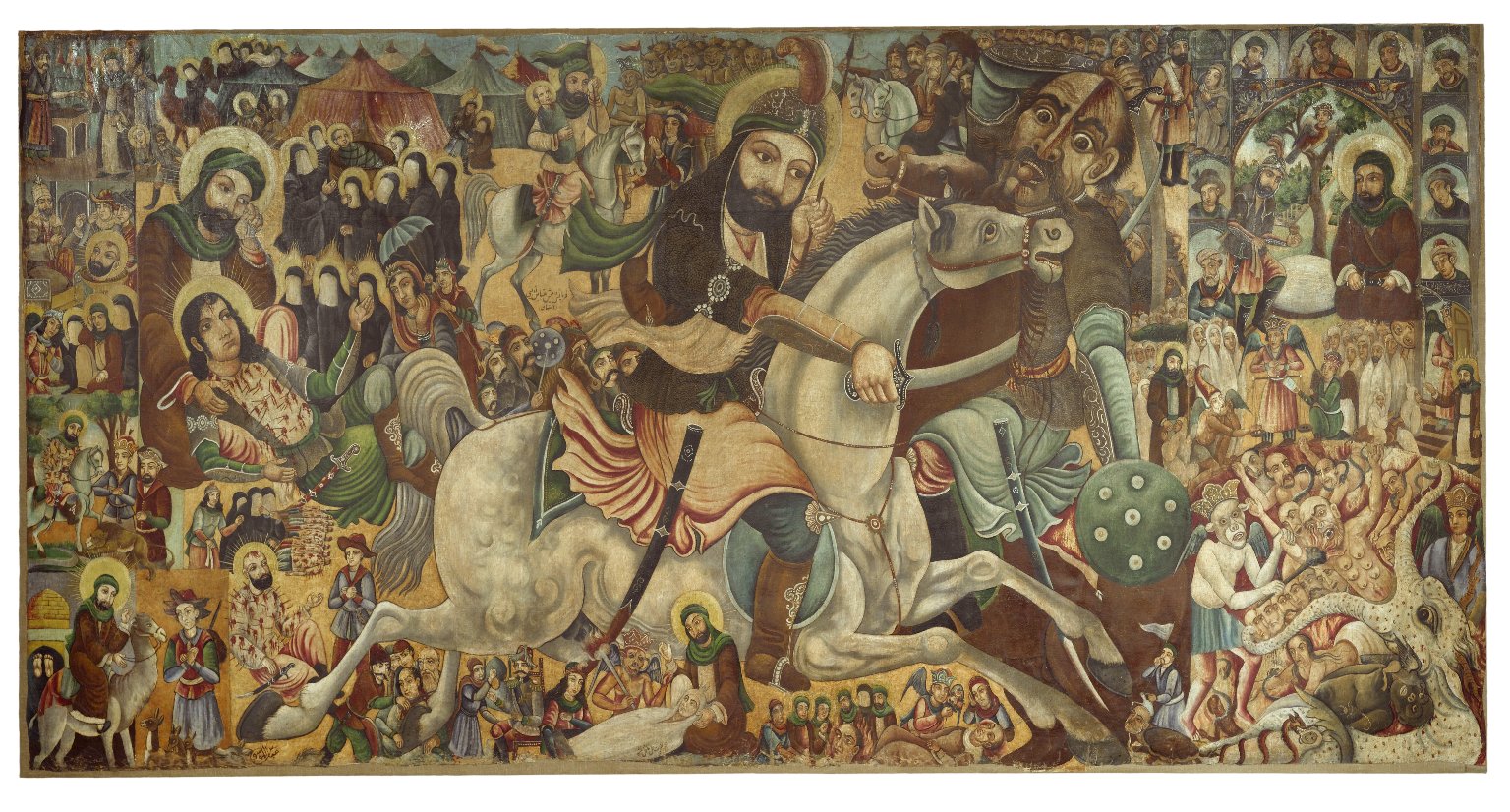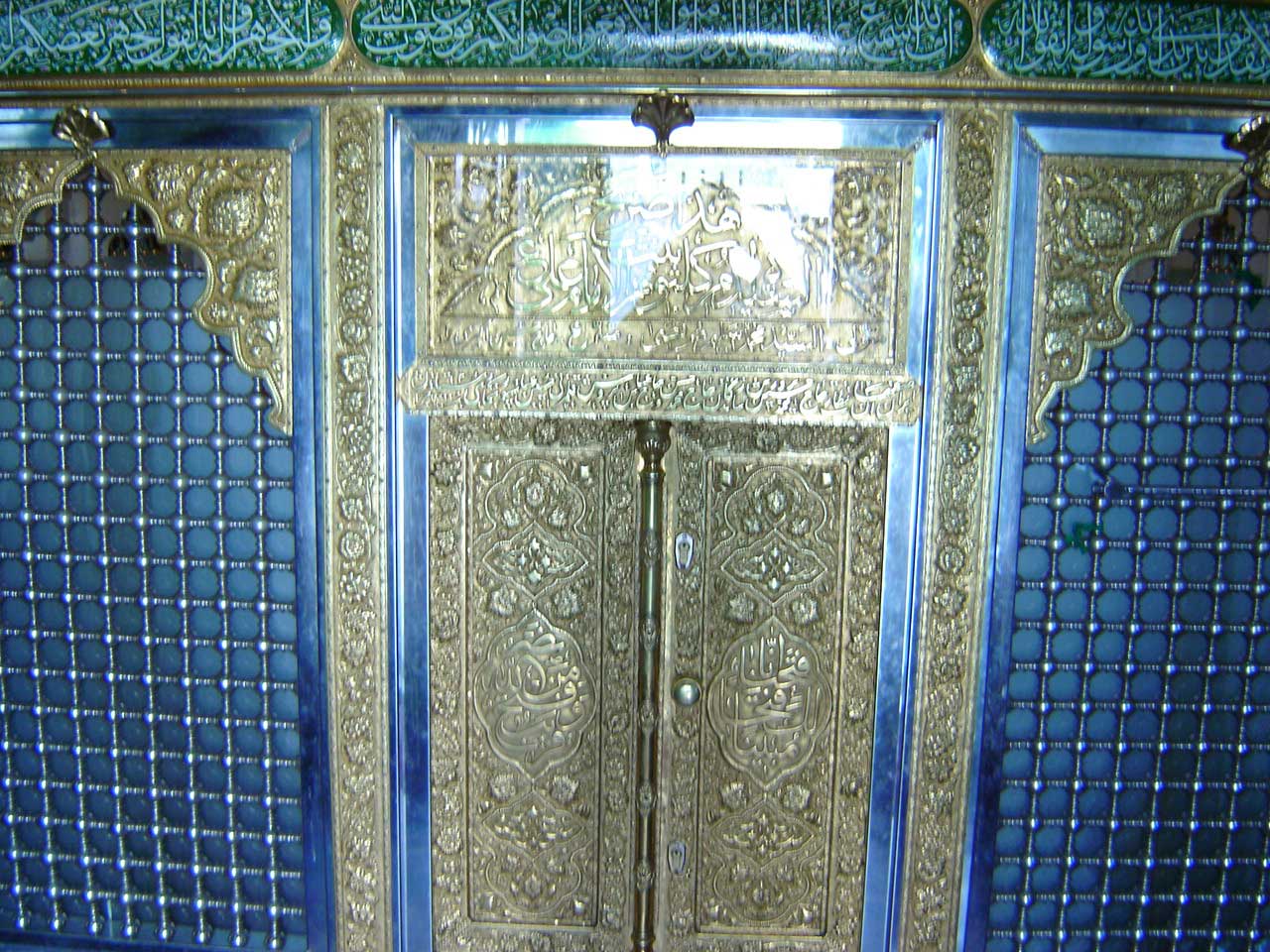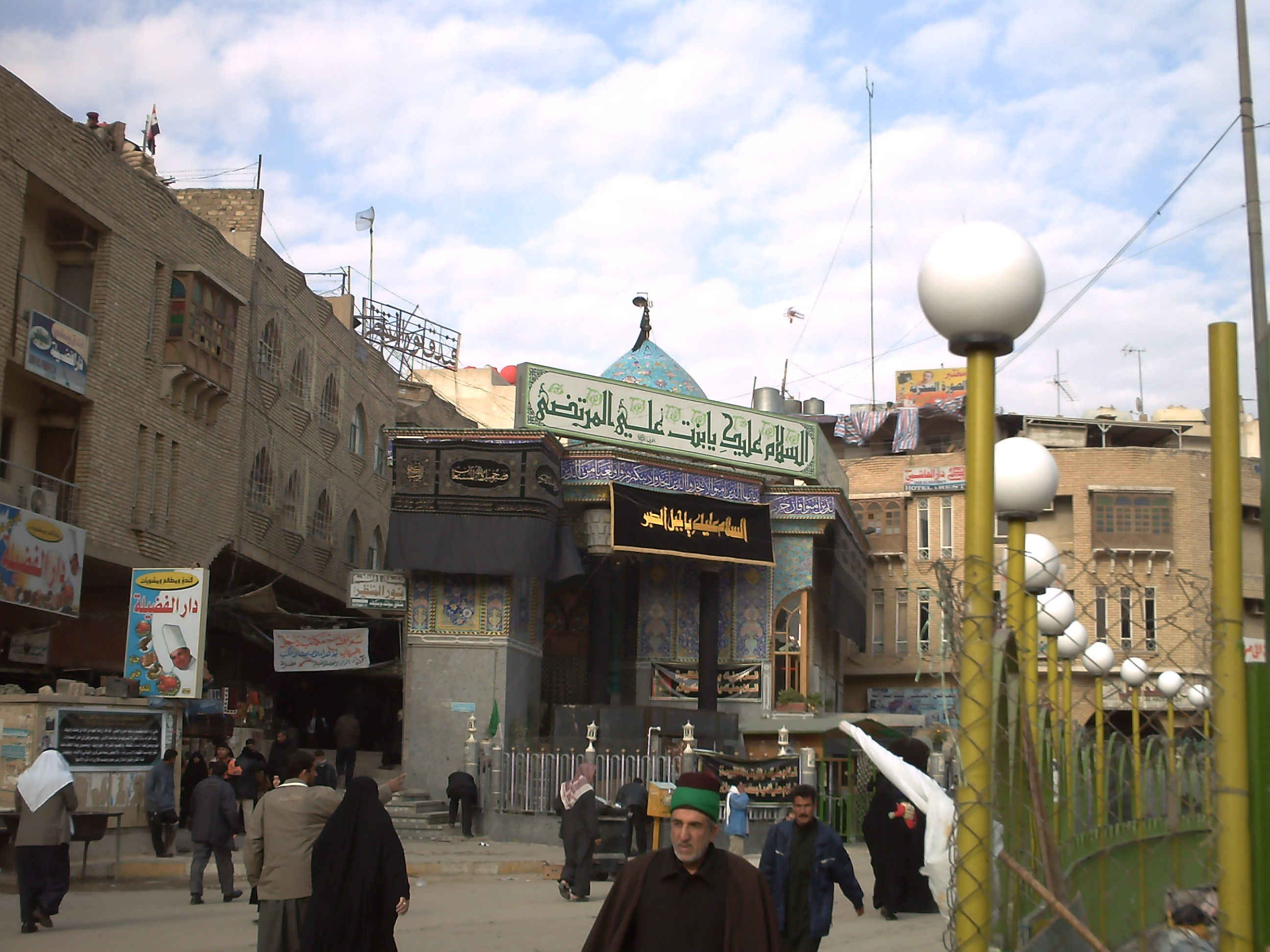|
Imamate And Guardianship Of Ali Ibn Abi Talib
Imamate and guardianship of Ali ibn Abi Talib or Imamate and Wilayah of Ali ibn Abi Talib refers to the spiritual position of Ali (''1st Shia Imam'' and ''4th Caliph of Islam'') and his role in teaching the religion truth and establishing Islamic Sharia after Muhammad, the Prophet of Islam. The Caliphate of Ali ibn Abi Talib from 35 to 40 AH (656-661 AD) in the official history is not the subject of this article. Regarding the succession of Ali, historians and scholars of Islamic history have generally either accepted the view of the Sunnis or rejected the truth of the matter as undiscoverable. One of the historians who has deviated from this common tradition is Wilferd Madelung. In the Encyclopaedia of Islam, ''Wilferd Madelung'' considers the main Shiite claims to be ''Ali'' 's own view because he believes that ''Ali'' considered himself the most worthy person for the caliphate compared to other companions, and blamed the entire Muslim community for turning away ... [...More Info...] [...Related Items...] OR: [Wikipedia] [Google] [Baidu] |
Islam
Islam (; ar, ۘالِإسلَام, , ) is an Abrahamic monotheistic religion centred primarily around the Quran, a religious text considered by Muslims to be the direct word of God (or ''Allah'') as it was revealed to Muhammad, the main and final Islamic prophet.Peters, F. E. 2009. "Allāh." In , edited by J. L. Esposito. Oxford: Oxford University Press. . (See alsoquick reference) " e Muslims' understanding of Allāh is based...on the Qurʿān's public witness. Allāh is Unique, the Creator, Sovereign, and Judge of mankind. It is Allāh who directs the universe through his direct action on nature and who has guided human history through his prophets, Abraham, with whom he made his covenant, Moses/Moosa, Jesus/Eesa, and Muḥammad, through all of whom he founded his chosen communities, the 'Peoples of the Book.'" It is the world's second-largest religion behind Christianity, with its followers ranging between 1-1.8 billion globally, or around a quarter of the world' ... [...More Info...] [...Related Items...] OR: [Wikipedia] [Google] [Baidu] |
Umamah Bint Abi Al-As
Umāma bint Abī al-ʿĀṣ ibn al-Rabīʿ ( ar, أُمَامَة بِنْت أَبِي ٱلْعَاص ابْن ٱلرَّبِيْع}), was a granddaughter of the Islamic prophet Muhammad and Khadija, via their daughter Zaynab, and is thus also known as ''Umāma bint Zaynab'' (). Muhammad was her maternal grandfather, and thus she is a member of his Ahl al-Bayt. She is also numbered among the Companions of the Prophet. Biography She was the daughter of Abu al-As ibn al-Rabi', who married Muhammad's eldest daughter Zaynab. She had one sibling, Ali. Her maternal aunts were Muhammad's daughters Ruqayya, Umm Kulthum and Fatima. When Umama was a small child, Muhammad used to carry her on his shoulder while he prayed. He used to put her down to prostrate and then pick her up again as he rose. Muhammad once promised to give an onyx necklace to "her whom I love best." His wives expected him to give it to Aisha, but he presented it to Umama. On a different occasion, he gave her a gold ... [...More Info...] [...Related Items...] OR: [Wikipedia] [Google] [Baidu] |
Abdullah Ibn Ali Ibn Abi Talib
ʿAbd Allāh ibn ʿAlī ibn Abī Ṭālib ( ar, عَبْد ٱللَّٰه ٱبْن عَلِيّ ٱبْن أَبِي طَالِب) was one of Ali's sons who was killed in Karbala in 680, and is considered among the martyrs of the Battle of Karbala. Abdullah is also among the four sons of Umm al-Banin, the daughter of Hazam. Battle of Karbala Historians have written about Abdullah ibn Ali ibn Abi Talib that on the day of Ashura, when the companions of Husayn ibn Ali and many of his family were killed, Abbas ibn Ali Al-Abbas ibn Ali ibn Abi Talib ( ar, ٱلْعَبَّاس ٱبْن عَلِيّ ٱبْن أَبِي طَالِب, al-ʿAbbās ibn ʿAlīy ibn ʾAbī Ṭālib), also known as Abu al-Fadl ( ar, أَبُو ٱلْفَضْل, link=no) (15 May 647 - ... called out his brothers in age order and told them to attack on the battlefield. Abdullah ibn Ali was the first one who was called in order to fight Umar ibn Sa'd's army. Abbas said to him: "O my brother, you first go ... [...More Info...] [...Related Items...] OR: [Wikipedia] [Google] [Baidu] |
Sayyida Ruqayya Bint Ali
Ruqayya bint ʿAlī () was a daughter of the fourth caliph Ali ibn Abi Talib (). She is considered an Alid saint (a ), her mother is Al-Sahba bint Rabi'a. She is claimed to be a full-sister of Abbas ibn Ali on a name plate (shown in the image on the right) in her ''mashhad'' (shrine) in Cairo, where she is traditionally considered to be a patron saint. Her shrine in Cairo is still used as an oratory where vows and intercessionary prayers to her are offered.Mashhad al-Sayyida Ruqayya, ArchNet.org, Accessed 10 June 2013 She is believed to have died when she was a child. There is also a shrine in Lahore (Pakistan) called Bibi Pak Daman (Urdu: بی بی پاکدامن Bībī Pāk Dāman) which locals believe to be the mausoleum of Ruqayya bint Ali. See also * Muslim ibn Aqil * Muhammad ibn Muslim and Ibrahim ibn Muslim * Sayyida Nafisa bint al-Hasan * Sayyida Ruqayya bint al-Husayn * Sayyida Zaynab bint Ali Zaynab bint Ali ( ar, زَيْنَب بِنْت عَلِيّ, ', ... [...More Info...] [...Related Items...] OR: [Wikipedia] [Google] [Baidu] |
Abbas Ibn Ali
Al-Abbas ibn Ali ibn Abi Talib ( ar, ٱلْعَبَّاس ٱبْن عَلِيّ ٱبْن أَبِي طَالِب, al-ʿAbbās ibn ʿAlīy ibn ʾAbī Ṭālib), also known as Abu al-Fadl ( ar, أَبُو ٱلْفَضْل, link=no) (15 May 647 - 10 October 680 CE) , was a son of the Muslim caliph and Imam Ali ibn Abi Talib, who was the cousin, son-in-law, and companion of the Islamic prophet Muhammad. His mother was Fatima bint Hizam, commonly known as Umm al-Banin ( ar, أُمّ ٱلْبَنِين, lit=mother of the sons, link=no), not to be confused with Fatima, the daughter of the Prophet. Abbas fought as the standard-bearer of his half-brother Husayn ibn Ali in the Battle of Karbala on 10 Muharram 61 AH (10 October 680 CE). He was killed in a desperate attempt to bring water from the Euphrates to quench the unbearable thirst of the besieged family of Muhammad. Shia Imams are reported to have praised Abbas for his faith and fortitude in defending Husayn. Abbas is s ... [...More Info...] [...Related Items...] OR: [Wikipedia] [Google] [Baidu] |
Muhammad Ibn Al-Hanafiyyah
Muḥammad ibn ʿAlī ibn Abī Ṭālib () also known as Muḥammad ibn al-Ḥanafīyya () (15 AH – 81 AH; AD 637 – 700) and surnamed Abū al-Qāsim. He was the third son of Ali ibn Abi Talib (the fourth rightly-guided caliph and the first Shia Imam). Biography Muhammad ibn al-Hanafiyya (Muhammad al-Akbar) was born in Medina about AD 633 (though also said to be during Umar's era), the third of Ali's sons. He was called Ibn al-Hanafiyya after his mother, Khawla bint Ja'far; she was known as Hanafiyya, "the Hanafi woman", after her tribe Banu Hanifa. After the death of Muhammad, the people of Yamama were declared apostates by the Muslims for refusing to pay the zakat (religious tax); the men were killed (see Ridda Wars), and the women were taken to Medina as slaves, Khawla bint Ja'far among them. When her tribesmen found out, they approached Ali and asked him to save her from slavery and to protect her family's honor and prestige. Consequently, Ali ibn Abi Talib pu ... [...More Info...] [...Related Items...] OR: [Wikipedia] [Google] [Baidu] |
Muhsin Ibn Ali
Muhsin ibn Ali ( ar, مُحْسِن ٱبْن عَلِيّ, '), also spelled Mohsin, was the youngest son of Fatima bint Muhammad and Ali ibn Abi Talib, and thus a maternal grandson of the Islamic prophet Muhammad. He was a brother of Husayn and Hasan. Controversy surrounds the fate of Muhsin as some canonical Shia sources report that Muhsin died in miscarriage, following a raid on her house led by Umar, a companion of Muhammad. Alternatively, Sunnis hold that Muhsin died in infancy of natural causes. Name The name Muhsin, like those of his brothers Hasan and Husayn, comes from the Arabic root Ḥ-S-N. Muhsin can mean 'beneficent,' 'benefactor,' or 'one who does the act of helping.' Historical background Saqifa In the immediate aftermath of Muhammad's death in 11/632, the Ansar (natives of Medina) gathered in the Saqifa () of the Sa'ida clan. The conventional wisdom is that they met to decide on a new leader for the Muslim community among themselves. For Ma ... [...More Info...] [...Related Items...] OR: [Wikipedia] [Google] [Baidu] |
Umm Kulthum Bint Ali
Zaynab al-Ṣughrā ( ar, زَيْنَب ٱلصُّغْرَىٰ, lit=Zaynab the Younger), also known by her kunya Umm Kulthūm bint ʿAlī ( ar, أُمّ كُلْثُوم بِنْت عَلِيّ, link=no), was the granddaughter of the Islamic prophet Muhammad and the daughter of Ali. Whether or not she was married to the Rashidun caliph Umar is a disputed topic between the Sunni and Shia. She is given the epithet 'the Younger' to distinguish her from her older sister, Zaynab the Elder (Zaynab al-Kubra). Family She was born around 6 AH as the fourth child of Ali and of Muhammad's daughter, Fatima. Her siblings were Hasan, Husayn and Zaynab al-Kubra.Muhammad ibn Saad. ''Kitab al-Tabaqat al-Kabir'' Volume 8. Translated by Bewley, A. (1995). ''The Women of Madina''. London: Ta-Ha Publishers. Muhammad gave her the kunya 'Umm Kulthum' because she closely resembled his daughter, Umm Kulthum bint Muhammad, Zaynab's maternal aunt. First marriage Sunni belief Ali wanted his da ... [...More Info...] [...Related Items...] OR: [Wikipedia] [Google] [Baidu] |
Zaynab Bint Ali
Zaynab bint Ali ( ar, زَيْنَب بِنْت عَلِيّ, ', ), was the eldest daughter of Ali, the fourth Rashidun caliph () and the first Shia Imam, and Fatima, the daughter of the Islamic prophet Muhammad. Zaynab is best known for her role in the aftermath of the Battle of Karbala (680), in which her brother Husayn and his family and companions were massacred by the forces of Yazid I (). The women and children were taken captive after the battle and marched to Kufa and then Damascus, where Zaynab gave impassioned speeches, condemning Yazid and spreading the news of Karbala. She was later freed and died shortly afterward in 682, though her burial site is uncertain. The two shrines associated with Zaynab in Damascus and Cairo are destinations for Muslim pilgrimage. She is considered to be a figure of sacrifice, strength, and piety in Islam, and a role model for Muslim women, typifying courage, leadership, and defiance against oppression. Titles The name 'Zayn ... [...More Info...] [...Related Items...] OR: [Wikipedia] [Google] [Baidu] |
Husayn Ibn Ali
Abū ʿAbd Allāh al-Ḥusayn ibn ʿAlī ibn Abī Ṭālib ( ar, أبو عبد الله الحسين بن علي بن أبي طالب; 10 January 626 – 10 October 680) was a grandson of the Islamic prophet Muhammad and a son of Ali ibn Abi Talib and Muhammad's daughter Fatima, as well as a younger brother of Hasan ibn Ali. He is claimed to be the third Imam of Shia Islam after his brother, Hasan, and before his son, Ali ibn Husayn Zayn al-Abidin. Being a grandson of the prophet, he is a member of the Ahl al-Bayt. He is also considered to be a member of the Ahl al-Kisa, and a participant in the event of Mubahala. Muhammad described him and his brother, Hasan, as "the leaders of the youth of Paradise." During the caliphate of Ali, Husayn accompanied him in wars. After the assassination of Ali, he obeyed his brother in recognizing Hasan–Muawiya treaty, in spite of being suggested to do otherwise. In the nine-year period between Hasan's abdication in AH 41 (660 CE) an ... [...More Info...] [...Related Items...] OR: [Wikipedia] [Google] [Baidu] |
Hasan Ibn Ali
Hasan ibn Ali ( ar, الحسن بن علي, translit=Al-Ḥasan ibn ʿAlī; ) was a prominent early Islamic figure. He was the eldest son of Ali and Fatima and a grandson of the Islamic prophet Muhammad. He briefly ruled as caliph from January 661 until August 661. He is considered as the second Imam in Shia Islam, succeeding Ali and preceding his brother Husayn. As a grandson of the prophet, he is part of the and the , also is said to have participated in the event of Mubahala. During the caliphate of Ali (), Hasan accompanied him in the military campaigns of the First Muslim Civil War. After Ali's assassination in 661, Hasan was acknowledged caliph in Kufa. His sovereignty was not recognized by Syria's governor Mu'awiya I (), who led an army into Kufa while pressing Hasan for abdication in letters. In response, Hasan sent a vanguard under Ubayd Allah ibn al-Abbas to block Mu'awiya's advance until he arrived with the main army. Meanwhile, Hasan was severely wounded in ... [...More Info...] [...Related Items...] OR: [Wikipedia] [Google] [Baidu] |
Descendants Of Ali Ibn Abi Talib
The Alids are those who claim descent from the '' rāshidūn'' caliph and Imam ʿAlī ibn Abī Ṭālib (656–661)—cousin, son-in-law, and companion of the Islamic prophet Muhammad—through all his wives. The main branches are the (including the Ḥasanids, Ḥusaynids, and Zaynabids) and the Alawids. History Primarily Sunnī Muslims in the Arab world reserve the term ''sharīf'' or ''sherīf'' for descendants of Ḥasan ibn ʿAlī, while the term ''sayyid'' is used for descendants of Ḥasan's brother Ḥusayn ibn ʿAlī. Both Ḥasan and Ḥusayn were grandchildren of Muhammad, through the marriage of his cousin ʿAlī ibn Abī Ṭālib and his daughter Fāṭimah. Ever since the post- Hashemite era began, the term ''sayyid'' has been used to denote descendants from both Ḥasan and Ḥusayn. Arab Shīʿa Muslims use the terms ''sayyid'' and ''habib'' to denote descendants from both Ḥasan and Ḥusayn; see . Lines There are several dynasties of Alid or ... [...More Info...] [...Related Items...] OR: [Wikipedia] [Google] [Baidu] |

.jpg)





